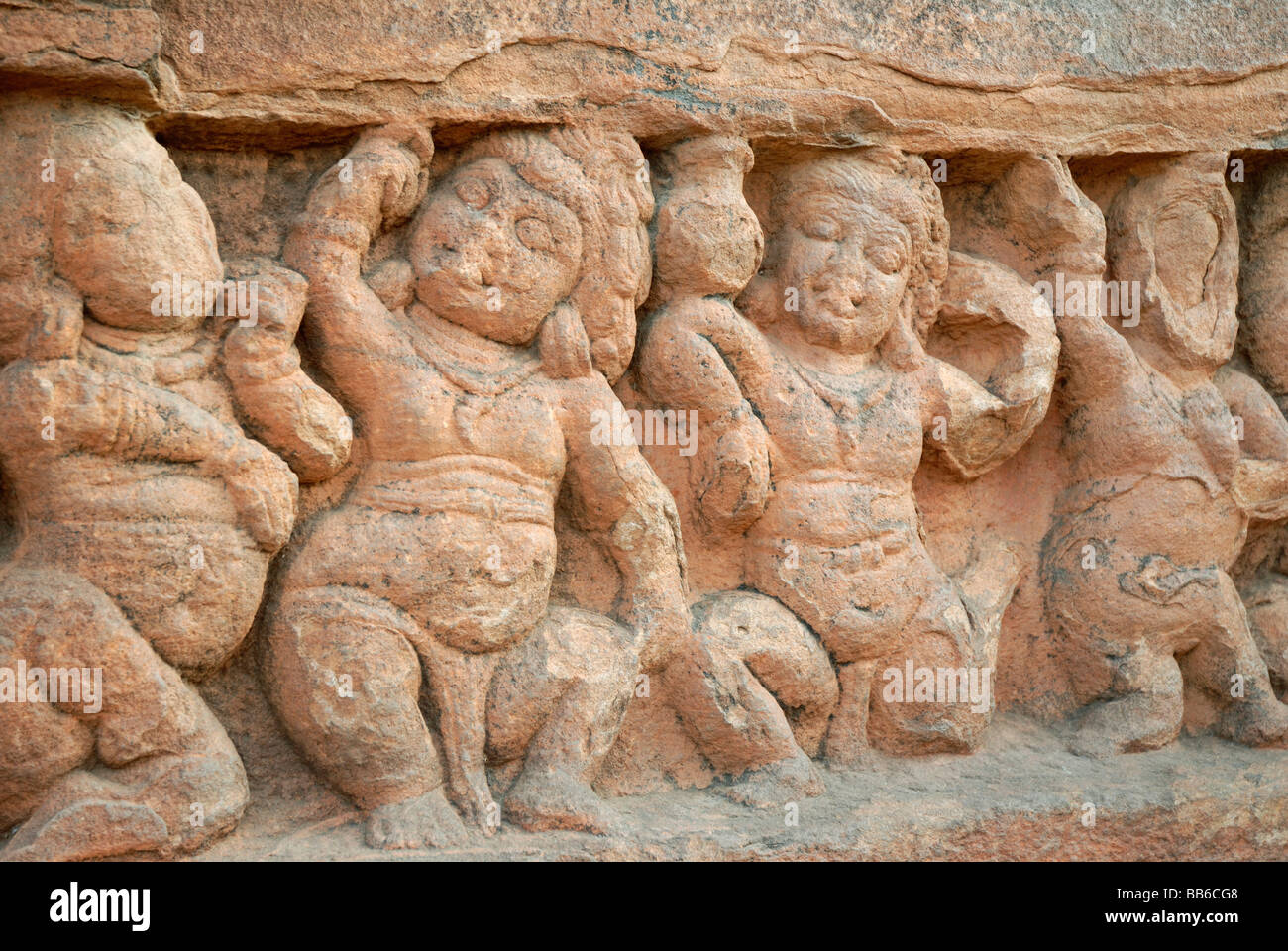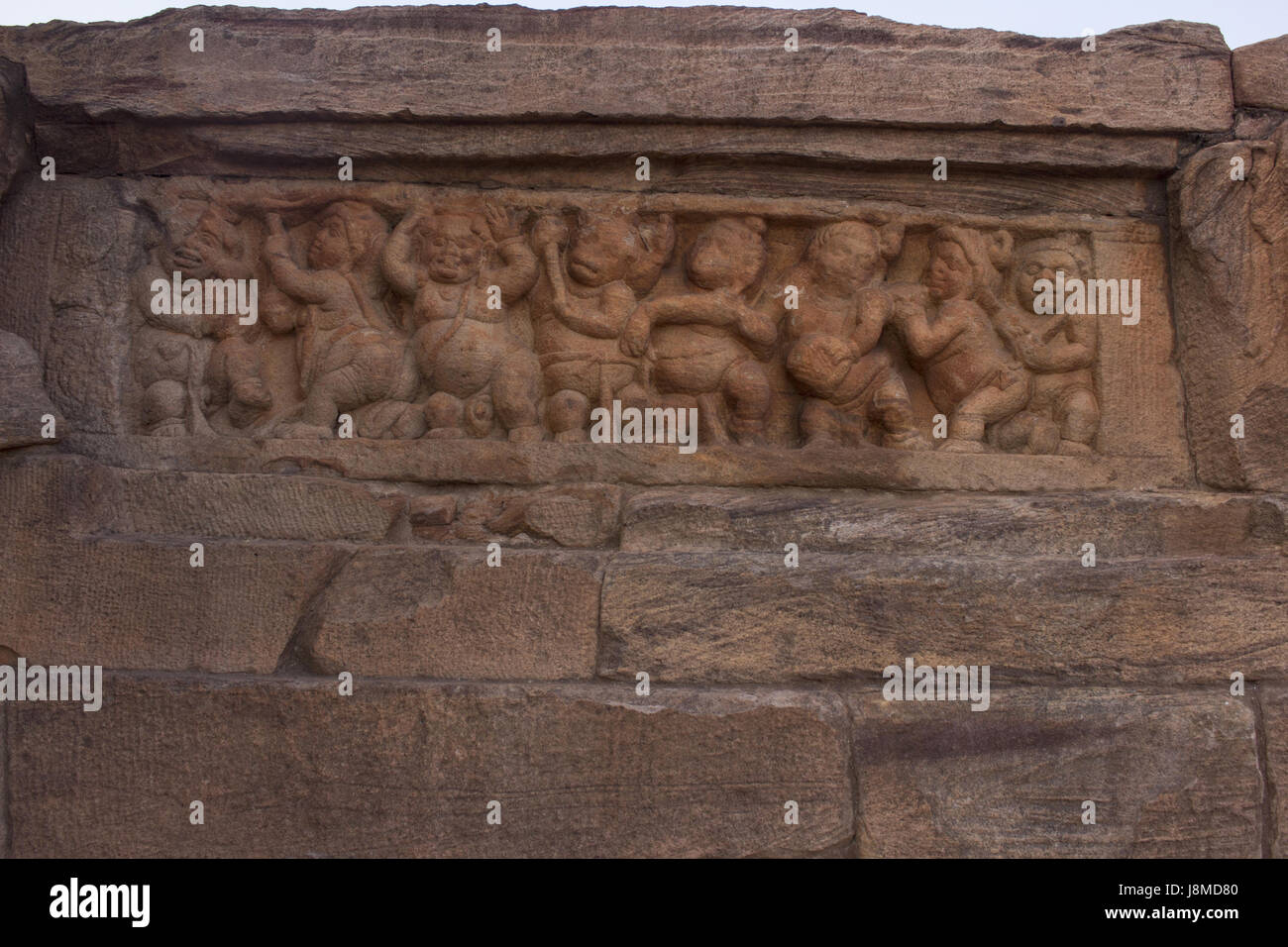https://tinyurl.com/y8v2y73c
Decipherment of Field symbols on 25 Indus Script inscriptions presented in this monograph.
![]() Hieroglyph on m37 seal and on an ox-hide type ingot: maĩd ʻrude harrow or clod breakerʼ (Marathi) rebus: mẽṛhẽt, meḍ'iron'
Hieroglyph on m37 seal and on an ox-hide type ingot: maĩd ʻrude harrow or clod breakerʼ (Marathi) rebus: mẽṛhẽt, meḍ'iron'
![]()
![]()
![]() Arrowhead, fish: The pair of signs; fish PLUS arrowhead ayo, hako 'fish'; a~s = scales of fish (Santali); rebus: aya = iron (G.); ayah, ayas = metal (Skt.) kaṇḍa ‘fire-altar’ (Santali) DEDR 191 Ta. ayirai, acarai, acalai loach, sandy colour, Cobitis thermalis; ayilai a kind of fish. Ma. ayala a fish, mackerel, scomber; aila, ayila a fish; ayira a kind of small fish, loach.aya 'fish' rebus: aya 'iron' ayas 'alloy metal' PLUS kaṇḍa ‘arrow’ (Skt.) H. kãḍerā m. ʻ a caste of bow -- and arrow -- makers (CDIAL 3024). Or. kāṇḍa, kã̄ṛ ʻstalk, arrow ʼ(CDIAL 3023). Together, the hypertext, Meluhha expression (Indian sprachbund, 'language union') is:ayaskāṇḍa m. n. "a quantity of iron"or"excellent iron", (gaRa kaskā
Arrowhead, fish: The pair of signs; fish PLUS arrowhead ayo, hako 'fish'; a~s = scales of fish (Santali); rebus: aya = iron (G.); ayah, ayas = metal (Skt.) kaṇḍa ‘fire-altar’ (Santali) DEDR 191 Ta. ayirai, acarai, acalai loach, sandy colour, Cobitis thermalis; ayilai a kind of fish. Ma. ayala a fish, mackerel, scomber; aila, ayila a fish; ayira a kind of small fish, loach.aya 'fish' rebus: aya 'iron' ayas 'alloy metal' PLUS kaṇḍa ‘arrow’ (Skt.) H. kãḍerā m. ʻ a caste of bow -- and arrow -- makers (CDIAL 3024). Or. kāṇḍa, kã̄ṛ ʻstalk, arrow ʼ(CDIAL 3023). Together, the hypertext, Meluhha expression (Indian sprachbund, 'language union') is:ayaskāṇḍa m. n. "a quantity of iron"or"excellent iron", (gaRa kaskādi - q.v) khaṇḍa-,with which in some of its senses kāṇḍa-is confounded]) a single joint of the stalk or stem of a plant, such as a bamboo or reed or cane kaṇḍa ‘arrow’ (Skt.) H. kãḍerā m. ʻ a caste of bow -- and arrow -- makers (CDIAL 3024). Or. kāṇḍa, kã̄ṛ ʻstalk, arrow ʼ(CDIAL 3023). ayaskāṇḍa ‘a quantity of iron, excellent iron’ (Pāṇ.gaṇ) Rebus: khaṇḍa, khāṇḍā ‘tools, pots and pans, metal-ware’. kanda 'fire-altar'
![]()
![]() Ayo ‘fish’; kaṇḍa ‘arrow’; rebus: ayaskāṇḍa. The sign sequence is ayaskāṇḍa ‘a quantity of iron, excellent iron’ (Pāṇ.gaṇ) ayo, hako 'fish'; a~s = scales of fish (Santali); rebus: aya = iron (G.); ayah, ayas = metal (Skt.) kaṇḍa ‘fire-altar’ (Santali) DEDR 191 Ta. ayirai, acarai, acalai loach, sandy colour, Cobitis thermalis; ayilai a kind of fish. Ma. ayala a fish, mackerel, scomber; aila, ayila a fish; ayira a kind of small fish, loach.
Ayo ‘fish’; kaṇḍa ‘arrow’; rebus: ayaskāṇḍa. The sign sequence is ayaskāṇḍa ‘a quantity of iron, excellent iron’ (Pāṇ.gaṇ) ayo, hako 'fish'; a~s = scales of fish (Santali); rebus: aya = iron (G.); ayah, ayas = metal (Skt.) kaṇḍa ‘fire-altar’ (Santali) DEDR 191 Ta. ayirai, acarai, acalai loach, sandy colour, Cobitis thermalis; ayilai a kind of fish. Ma. ayala a fish, mackerel, scomber; aila, ayila a fish; ayira a kind of small fish, loach.![]() kole.l 'temple, smithy' (Ko.); kolme ‘smithy' (Ka.) kol ‘working in iron, blacksmith (Ta.); kollan-blacksmith (Ta.); kollan blacksmith, artificer (Ma.)(DEDR 2133) kolme = furnace (Ka.) kol = pan~calo_ha (five metals); kol metal (Ta.lex.) pan~caloha = a metallic alloy containing five metals: copper, brass, tin, lead and iron (Skt.); analternative list of five metals: gold, silver, copper, tin (lead), and iron (dhātu; Nānārtharatnākara. 82; Man:garāja’s Nighaṇṭu. 498)(Ka.) kol, kolhe, ‘the koles, an aboriginal tribe if iron smelters speaking a language akin to that of Santals’ (Santali)
kole.l 'temple, smithy' (Ko.); kolme ‘smithy' (Ka.) kol ‘working in iron, blacksmith (Ta.); kollan-blacksmith (Ta.); kollan blacksmith, artificer (Ma.)(DEDR 2133) kolme = furnace (Ka.) kol = pan~calo_ha (five metals); kol metal (Ta.lex.) pan~caloha = a metallic alloy containing five metals: copper, brass, tin, lead and iron (Skt.); analternative list of five metals: gold, silver, copper, tin (lead), and iron (dhātu; Nānārtharatnākara. 82; Man:garāja’s Nighaṇṭu. 498)(Ka.) kol, kolhe, ‘the koles, an aboriginal tribe if iron smelters speaking a language akin to that of Santals’ (Santali)![]() Zebu and leaves. In front of the standard device and the stylized tree of 9 leaves, are the black buck antelopes. Black paint on red ware of Kulli style. Mehi. Second-half of 3rd millennium BCE. [After G.L. Possehl, 1986, Kulli: an exploration of an ancient civilization in South Asia, Centers of Civilization, I, Durham, NC: 46, fig. 18 (Mehi II.4.5), based on Stein 1931: pl. 30.
Zebu and leaves. In front of the standard device and the stylized tree of 9 leaves, are the black buck antelopes. Black paint on red ware of Kulli style. Mehi. Second-half of 3rd millennium BCE. [After G.L. Possehl, 1986, Kulli: an exploration of an ancient civilization in South Asia, Centers of Civilization, I, Durham, NC: 46, fig. 18 (Mehi II.4.5), based on Stein 1931: pl. 30. ![]()
![]() V326 (Orthographic variants of Sign 326)
V326 (Orthographic variants of Sign 326) ![]() V327 (Orthographic variants of Sign 327) loa = a species of fig tree, ficus glomerata, the fruit of ficus glomerata (Santali.lex.) Vikalpa: kamaṛkom ‘ficus’ (Santali); rebus: kampaṭṭam ‘mint’ (Ta.) patra ‘leaf’ (Skt.); rebus: paṭṭarai ‘workshop’ (Ta.) Rebus: lo ‘iron’ (Assamese, Bengali); loa ‘iron’ (Gypsy) lauha = made of copper or iron (Gr.S'r.); metal, iron (Skt.); lo_haka_ra = coppersmith, ironsmith (Pali); lo_ha_ra = blacksmith (Pt.); lohal.a (Or.); lo_ha = metal, esp. copper or bronze (Pali); copper
V327 (Orthographic variants of Sign 327) loa = a species of fig tree, ficus glomerata, the fruit of ficus glomerata (Santali.lex.) Vikalpa: kamaṛkom ‘ficus’ (Santali); rebus: kampaṭṭam ‘mint’ (Ta.) patra ‘leaf’ (Skt.); rebus: paṭṭarai ‘workshop’ (Ta.) Rebus: lo ‘iron’ (Assamese, Bengali); loa ‘iron’ (Gypsy) lauha = made of copper or iron (Gr.S'r.); metal, iron (Skt.); lo_haka_ra = coppersmith, ironsmith (Pali); lo_ha_ra = blacksmith (Pt.); lohal.a (Or.); lo_ha = metal, esp. copper or bronze (Pali); copper
workshop (koḍ)]
baḍhoe ‘a carpenter, worker in wood, iron’; badhoria ‘expert in working in wood’(Santali) বরাহ barāha 'boar' Rebus: bāṛaï 'carpenter' (Bengali) bari 'merchant' barea 'merchant' (Santali) बारकश or बारकस [ bārakaśa or bārakasa ] n (
![]()
![]() Sign 121 70 Read as a variant of Sign 112: Four count, three times: gaṇḍa 'four' rebus: kaṇḍa 'fire-altar' khaṇḍa 'implements, metalware' PLUS
Sign 121 70 Read as a variant of Sign 112: Four count, three times: gaṇḍa 'four' rebus: kaṇḍa 'fire-altar' khaṇḍa 'implements, metalware' PLUS
dhvajá -- , paṭa -- ]Pk. dhayavaḍa -- m. ʻ flag ʼ, OG. dhayavaḍa m. Rebus: Pk. dhāu -- m. ʻ metal, red chalk ʼ; N. dhāu ʻ ore (esp. of copper) ʼ; Or. ḍhāu ʻ red chalk, red ochre ʼ (whence ḍhāuā ʻ reddish ʼ; M. dhāū, dhāv m.f. ʻ a partic. soft red stone ʼ (whence dhā̆vaḍ m. ʻ a caste of iron -- smelters ʼ, dhāvḍī ʻ composed of or relating to iron ʼ); -- Si. dā ʻ relic (CDIAL 6773)
-- kanka, kárṇaka 'rim-of-jar' rebus -karṇī accountant
![]() kanac 'corner' rebus: kancu 'bell-
kanac 'corner' rebus: kancu 'bell-![]() koḍa 'one' rebus: koḍ 'workshop' Vikalpa: mēthí m. ʻ pillar in threshing floor to which oxen are fastened, prop for supporting carriage shafts ʼ AV., ˚thī -- f. KātyŚr.com., mēdhī -- f. Divyāv. 2. mēṭhī -- f. PañcavBr.com., mēḍhī -- , mēṭī -- f. BhP.1. Pa. mēdhi -- f. ʻ post to tie cattle to, pillar, part of a stūpa ʼ; Pk. mēhi -- m. ʻ post on threshing floor ʼ, N. meh(e), miho, miyo, B. mei, Or. maï -- dāṇḍi, Bi. mẽh, mẽhā ʻ the post ʼ, (SMunger) mehā ʻ the bullock next the post ʼ, Mth. meh, mehā ʻ the post ʼ, (SBhagalpur) mīhã̄ ʻ the bullock next the post ʼ, (SETirhut) mẽhi bāṭi ʻ vessel with a projecting base ʼ.
koḍa 'one' rebus: koḍ 'workshop' Vikalpa: mēthí m. ʻ pillar in threshing floor to which oxen are fastened, prop for supporting carriage shafts ʼ AV., ˚thī -- f. KātyŚr.com., mēdhī -- f. Divyāv. 2. mēṭhī -- f. PañcavBr.com., mēḍhī -- , mēṭī -- f. BhP.1. Pa. mēdhi -- f. ʻ post to tie cattle to, pillar, part of a stūpa ʼ; Pk. mēhi -- m. ʻ post on threshing floor ʼ, N. meh(e), miho, miyo, B. mei, Or. maï -- dāṇḍi, Bi. mẽh, mẽhā ʻ the post ʼ, (SMunger) mehā ʻ the bullock next the post ʼ, Mth. meh, mehā ʻ the post ʼ, (SBhagalpur) mīhã̄ ʻ the bullock next the post ʼ, (SETirhut) mẽhi bāṭi ʻ vessel with a projecting base ʼ.
Decipherment of Field symbols on 25 Indus Script inscriptions presented in this monograph.
Forward-thrusting, spiny-horned young bull PLUS standard see
'Unicorn' is kũdār 'turner'; Indus Script has been deciphered; references in textbooks need revision https://tinyurl.com/ybx9rc7u The Meluhha rebus readings are: -- singa 'one-horned young bull' (often called 'unicorn') rebus singi 'ornament gold'-- kunda 'lathe' rebus kundāru 'turner'-- kamaṭamu 'portable gold furnace' rebus kammaṭa 'mint, coiner, coinage'
Zebu पोळ pōḷa, 'Zebu, bos indicus' Rebus: पोळ pōḷa 'magnetite, ferrite ore'
Elephant: karibha, ibha 'elephant' Rebus: karba, ib 'iron'
Elephant: karibha, ibha 'elephant' Rebus: karba, ib 'iron'
Buffalo: rāngo ‘water buffalo bull’ (Ku.N.)(CDIAL 10559) Rebus: .Hieroglyhph: buffalo: Ku. N. rã̄go ʻ buffalo bull ʼ (or < raṅku -- ?).(CDIAL 10538, 10559) Rebus: raṅga3 n. ʻ tin ʼ lex. [Cf. nāga -- 2, vaṅga -- 1] Pk. raṁga -- n. ʻ tin ʼ; P. rã̄g f., rã̄gā m. ʻ pewter, tin ʼ (← H.); Ku. rāṅ ʻ tin, solder ʼ, gng. rã̄k; N. rāṅ, rāṅo ʻ tin, solder ʼ, A. B. rāṅ; Or. rāṅga ʻ tin ʼ, rāṅgā ʻ solder, spelter ʼ, Bi. Mth. rã̄gā, OAw. rāṁga; H. rã̄g f., rã̄gā m. ʻ tin, pewter ʼ; Si. ran̆ga ʻ tin ʼ.(CDIAL 10562) B. rāṅ(g)tā ʻ tinsel, copper -- foil ʼ.(CDIAL 10567)
rango ‘pewter’. ranga, rang pewter is an alloy of tin, lead, and antimony (anjana) (Santali)
Bison/ox: balad m. ʻox ʼ, gng. bald, (Ku.) barad, id. (Nepali. Tarai) Rebus: bharat, baran (5 copper, 4 zinc and 1 tin)(Marathi.Punjabi)
Tumblers: dolutsu 'tumble' Rebus: dul 'cast metal' Te. ḍollu to fall; ḍolligillu to fall or tumble over; ḍullu to fall off; ḍul(u)cu, (K. also) ḍulupu to cause to fall; ? ūḍuto fall off, come off, drop, give way, fail. Kol. ḍol- (ḍolt-) to lie down, be felled; ḍolp- (ḍolopt-) to fell (trees), pull down (wall).(DEDR 2988) డొల్లు , దొల్లు or దొరలు ḍollu. [Tel.] v. n. To fall, to roll over. పడు, పొరలు.డొలుచు or డొల్చు ḍoluṭsu. [Tel.] v. n. To tumble head over heels as dancing girls do. డొల్లజేయు.డోలు ḍōlu. [Tel.] n. A drum. Rebus: డౌలు or డవులు ḍaulu. [Tel.] An estimate మదింపు. Demand or collection of revenue by the Government: డవులుదారు an appraiser. డవులుపట్టీ an account of the estimate of each farmer's produce.
kāḍ 2 काड् a man's length, the stature of a man (as a measure of length); Hieroglyph: kaḍī a chain; a hook; a link (G.); kaḍum a bracelet, a ring (G.) Rebus: kaḍiyo [Hem. Des. kaḍaio = Skt. sthapati a mason] a bricklayer; a mason; kaḍiyaṇa, kaḍiyeṇa a woman of the bricklayer caste; a wife of a bricklayer (G.) rebus: kāḍ ‘stone’; Ga. (Oll.) kanḍ , (S.) kanḍu (pl. kanḍkil) id.
Mohenjo-daro Seal impression. m0296 Two heads of one-horned bulls with neck-rings, joined end to end (to a standard device with two rings coming out of the top part?), under a stylized tree-branch with nine leaves.
saṅghara 'chain link' rebus: sangara 'trade'; samgaha ‘catalogue, list’.
खोंद [ khōnda ] n A hump (on the back): also a protuberance or an incurvation (of a wall, a hedge, a road). Rebus: kō̃da -कोँद । इष्टिकाभ्राष्ट्रः f. a brick-kiln. (Kashmiri) kõdār 'turner' (Bengali). Rebus: खोदणें [ khōdaṇēṃ ] v c & i ( H) To dig. 2 To engrave. खोद खोदून विचारणें or -पुसणें To question minutely and searchingly, to probe.गोट [ gōṭa ] m ( H) A metal wristlet. An ornament of women. 2 Encircling or investing. v घाल, दे. 3 An encampment or camp: also a division of a camp. 4 The hem or an appended border (of a garment).गोटा [ gōṭā ] m A roundish stone or pebble. 2 A marble (of stone, lac, wood &c.) 3 fig. A grain of rice in the ear. Ex. पावसानें भाताचे गोटे झडले. An overripe and rattling cocoanut: also such dry kernel detached from the shell. 5 A narrow fillet of brocade.गोटाळ [ gōṭāḷa ] a (गोटा) Abounding in pebbles--ground.गोटी [ gōṭī ] f (Dim. of गोटा) A roundish stone or pebble. 2 A marble. 3 A large lifting stone. Used in trials of strength among the Athletæ. 4 A stone in temples described at length under उचला 5 fig. A term for a round, fleshy, well-filled body.
Rebus: गोटी [ gōṭī ] f (Dim. of गोटा) A lump of silver: as obtained by melting down lace or fringe.
Hieroglyph: lo = nine (Santali); no = nine (B.) on-patu = nine (Ta.)
[Note the count of nine fig leaves on m0296] Rebus: loa = aspecies of fig tree, ficus glomerata, the fruit of ficus glomerata (Santali.lex.)
= bronze (Te.) ![]() Ligatured glyph. ara 'spoke' rebus: ara 'brass'. era, er-a = eraka = ?nave; erako_lu = the iron axle of a carriage (Ka.M.); cf. irasu (Ka.lex.)
Ligatured glyph. ara 'spoke' rebus: ara 'brass'. era, er-a = eraka = ?nave; erako_lu = the iron axle of a carriage (Ka.M.); cf. irasu (Ka.lex.)
[Note Sign 391 and its ligatures Signs 392 and 393 may connote a spoked-wheel,
nave of the wheel through which the axle passes; cf. ara_, spoke]erka = ekke (Tbh.
of arka) aka (Tbh. of arka) copper (metal); crystal (Ka.lex.) cf. eruvai = copper (Ta.lex.) eraka, er-aka = any metal infusion (Ka.Tu.); erako molten cast (Tu.lex.) Rebus: eraka = copper (Ka.)eruvai = copper (Ta.); ere - a dark-red colour (Ka.)(DEDR 817). eraka, era, er-a = syn. erka, copper, weapons (Ka.)Vikalpa: ara, arā (RV.) = spoke of wheel ஆரம்² āram , n. < āra. 1. Spoke of a wheel. See ஆரக்கால். ஆரஞ்
 Ligatured glyph. ara 'spoke' rebus: ara 'brass'. era, er-a = eraka = ?nave; erako_lu = the iron axle of a carriage (Ka.M.); cf. irasu (Ka.lex.)
Ligatured glyph. ara 'spoke' rebus: ara 'brass'. era, er-a = eraka = ?nave; erako_lu = the iron axle of a carriage (Ka.M.); cf. irasu (Ka.lex.)[Note Sign 391 and its ligatures Signs 392 and 393 may connote a spoked-wheel,
nave of the wheel through which the axle passes; cf. ara_, spoke]erka = ekke (Tbh.
of arka) aka (Tbh. of arka) copper (metal); crystal (Ka.lex.) cf. eruvai = copper (Ta.lex.) eraka, er-aka = any metal infusion (Ka.Tu.); erako molten cast (Tu.lex.) Rebus: eraka = copper (Ka.)eruvai = copper (Ta.); ere - a dark-red colour (Ka.)(DEDR 817). eraka, era, er-a = syn. erka, copper, weapons (Ka.)Vikalpa: ara, arā (RV.) = spoke of wheel ஆரம்² āram , n. < āra. 1. Spoke of a wheel. See ஆரக்கால். ஆரஞ்
சூழ்ந்தவயில்வாய்நேமியொடு (சிறுபாண். 253). Rebus: ஆரம் brass; பித்தளை.(அக. நி.)kund opening in the nave or hub of a wheel to admit the axle (Santali) Rebus: kō̃da -कोँद । इष्टिकाभ्राष्ट्रः f. a brick-kiln. (Kashmiri) kõdār 'turner' (Bengali).
 Ayo ‘fish’; kaṇḍa ‘arrow’; rebus: ayaskāṇḍa. The sign sequence is ayaskāṇḍa ‘a quantity of iron, excellent iron’ (Pāṇ.gaṇ) ayo, hako 'fish'; a~s = scales of fish (Santali); rebus: aya = iron (G.); ayah, ayas = metal (Skt.) kaṇḍa ‘fire-altar’ (Santali) DEDR 191 Ta. ayirai, acarai, acalai loach, sandy colour, Cobitis thermalis; ayilai a kind of fish. Ma. ayala a fish, mackerel, scomber; aila, ayila a fish; ayira a kind of small fish, loach.
Ayo ‘fish’; kaṇḍa ‘arrow’; rebus: ayaskāṇḍa. The sign sequence is ayaskāṇḍa ‘a quantity of iron, excellent iron’ (Pāṇ.gaṇ) ayo, hako 'fish'; a~s = scales of fish (Santali); rebus: aya = iron (G.); ayah, ayas = metal (Skt.) kaṇḍa ‘fire-altar’ (Santali) DEDR 191 Ta. ayirai, acarai, acalai loach, sandy colour, Cobitis thermalis; ayilai a kind of fish. Ma. ayala a fish, mackerel, scomber; aila, ayila a fish; ayira a kind of small fish, loach. kole.l 'temple, smithy' (Ko.); kolme ‘smithy' (Ka.) kol ‘working in iron, blacksmith (Ta.); kollan-blacksmith (Ta.); kollan blacksmith, artificer (Ma.)(DEDR 2133) kolme = furnace (Ka.) kol = pan~calo_ha (five metals); kol metal (Ta.lex.) pan~caloha = a metallic alloy containing five metals: copper, brass, tin, lead and iron (Skt.); an
kole.l 'temple, smithy' (Ko.); kolme ‘smithy' (Ka.) kol ‘working in iron, blacksmith (Ta.); kollan-blacksmith (Ta.); kollan blacksmith, artificer (Ma.)(DEDR 2133) kolme = furnace (Ka.) kol = pan~calo_ha (five metals); kol metal (Ta.lex.) pan~caloha = a metallic alloy containing five metals: copper, brass, tin, lead and iron (Skt.); an Zebu and leaves. In front of the standard device and the stylized tree of 9 leaves, are the black buck antelopes. Black paint on red ware of Kulli style. Mehi. Second-half of 3rd millennium BCE. [After G.L. Possehl, 1986, Kulli: an exploration of an ancient civilization in South Asia, Centers of Civilization, I, Durham, NC: 46, fig. 18 (Mehi II.4.5), based on Stein 1931: pl. 30.
Zebu and leaves. In front of the standard device and the stylized tree of 9 leaves, are the black buck antelopes. Black paint on red ware of Kulli style. Mehi. Second-half of 3rd millennium BCE. [After G.L. Possehl, 1986, Kulli: an exploration of an ancient civilization in South Asia, Centers of Civilization, I, Durham, NC: 46, fig. 18 (Mehi II.4.5), based on Stein 1931: pl. 30. adar ḍangra ‘zebu’ (Santali); Rebus: aduru ‘native metal’ (Ka.);ḍhan:gar
‘blacksmith’ (WPah.) ayir = iron dust, any ore (Ma.) aduru = gan.iyinda
tegadu karagade iruva aduru = ore taken from the mine and not subjected to
melting in a furnace (Ka. Siddha_nti Subrahman.ya’ S’astri’s new interpretation
of the Amarakos’a, Bangalore, Vicaradarpana Press, 1872, p. 330) DEDR 192 Ta. ayil iron. Ma. ayir, ayiram any ore. Ka. aduru native
metal. Tu. ajirda karba very hard iron
‘blacksmith’ (WPah.) ayir = iron dust, any ore (Ma.) aduru = gan.iyinda
tegadu karagade iruva aduru = ore taken from the mine and not subjected to
melting in a furnace (Ka. Siddha_nti Subrahman.ya’ S’astri’s new interpretation
of the Amarakos’a, Bangalore, Vicaradarpana Press, 1872, p. 330) DEDR 192 Ta. ayil iron. Ma. ayir, ayiram any ore. Ka. aduru native
metal. Tu. ajirda karba very hard iron

 V326 (Orthographic variants of Sign 326)
V326 (Orthographic variants of Sign 326)  V327 (Orthographic variants of Sign 327) loa = a species of fig tree, ficus glomerata, the fruit of ficus glomerata (Santali.lex.) Vikalpa: kamaṛkom ‘ficus’ (Santali); rebus: kampaṭṭam ‘mint’ (Ta.) patra ‘leaf’ (Skt.); rebus: paṭṭarai ‘workshop’ (Ta.) Rebus: lo ‘iron’ (Assamese, Bengali); loa ‘iron’ (Gypsy) lauha = made of copper or iron (Gr.S'r.); metal, iron (Skt.); lo_haka_ra = coppersmith, ironsmith (Pali); lo_ha_ra = blacksmith (Pt.); lohal.a (Or.); lo_ha = metal, esp. copper or bronze (Pali); copper
V327 (Orthographic variants of Sign 327) loa = a species of fig tree, ficus glomerata, the fruit of ficus glomerata (Santali.lex.) Vikalpa: kamaṛkom ‘ficus’ (Santali); rebus: kampaṭṭam ‘mint’ (Ta.) patra ‘leaf’ (Skt.); rebus: paṭṭarai ‘workshop’ (Ta.) Rebus: lo ‘iron’ (Assamese, Bengali); loa ‘iron’ (Gypsy) lauha = made of copper or iron (Gr.S'r.); metal, iron (Skt.); lo_haka_ra = coppersmith, ironsmith (Pali); lo_ha_ra = blacksmith (Pt.); lohal.a (Or.); lo_ha = metal, esp. copper or bronze (Pali); copper(VS.); loho, lo_ = metal, ore, iron (Si.) loha lut.i = iron utensils and implements (Santali.lex.) koṭiyum = a wooden circle put round the neck of an animal; koṭ = neck
(G.lex.) kōṭu = horns (Ta.) kōḍiya, kōḍe = young bull (G.) Rebus: koḍ = place where artisans work (Gujarati)
[Thus, the paired glyph of one-horned heifers connotes (metal) casting (dul)
workshop (koḍ)]
The standard device
with holes at both ends to hold a cord. Each end is decorated with a punctuated
design of standard device. 42 x 1.4 cm. Mohenjodaro Museum, MM 1366; Marshall
1931: 220.527. Pl. CXVIII, 14 (for punctuated design) 2. Detail of gold fillet with punctuated design of standard device at both ends of the gold fillet. (After Fig. 7.32, Kenoyer, 1998)
design of standard device. 42 x 1.4 cm. Mohenjodaro Museum, MM 1366; Marshall
1931: 220.527. Pl. CXVIII, 14 (for punctuated design) 2. Detail of gold fillet with punctuated design of standard device at both ends of the gold fillet. (After Fig. 7.32, Kenoyer, 1998)
Guild, caravan
Pali:Sanghaṭita [saŋ+ghaṭita, for ˚ghaṭṭita, pp. of ghaṭṭeti] 1. struck, sounded, resounding with (-- ˚) J v.9 (v. l. ṭṭ); Miln 2. -- 2. pierced together, pegged together, constructed Miln 161 (nāvā nānā -- dāru˚). Marathi: सांगड [ sāṅgaḍa ] m f (संघट्ट S) A float composed of
two canoes or boats bound together: also a link of two pompions &c. to swim or float by. 2 f A body formed of two or more (fruits, animals, men) linked or joined together. 3 That member of a turner's apparatus by which the piece to be turned is confined and steadied. सांगडीस धरणें To take into linkedness or close connection with, lit. fig.
सांगडणी [ sāṅgaḍaṇī ] f (Verbal of सांगडणें) Linking or joining together.
सांगडणें [ sāṅgaḍaṇēṃ ] v c (सांगड) To link, join, or unite together (boats, fruits, animals).
2 Freely. To tie or bind up or unto.
सांगडबाहुली [ sāṅgaḍabāhulī ] f A puppet.
सांगडी [ sāṅgaḍī ] f (Commonly सांगड) A float &c. san:gaḍa ‘lathe, furnace’ san:ghāḍo, saghaḍī (G.) = firepan; saghaḍī, śaghaḍi = a pot for holding fire (G.)[cula_ sagaḍi_
portable hearth (G.)] aguḍe = brazier (Tu.) san:gaḍa, ‘lathe, portable furnace’; rebus: battle; jangaḍ iyo ‘military guard who accompanies treasure into the treasury’; san:ghāḍiyo, a worker on a lathe (G.) The dotted circles on the bottom portion of the device connote ghangar ghongor; rebus: kangar ‘portable furnace’. Rebus: CDIAL 12858 saṁghara living in the same house . [Cf. ságr̥ha<-> ĀpŚr. -- ghara -- ]Pa. saṅghara -- with one's own family (?); L. sagghrā accompanied by one's own family ; H. sã̄ghar m. wife's son by former husband . CDIAL 12854 saṁghá m.
association, a community Mn. [√han1] Pa. saṅgha -- m. assembly, the priesthood ; Aś. saṁgha -- m. the Buddhist community ; Pk. saṁgha -- m. assembly, collection
; OSi. (Brāhmī inscr.) saga, Si. san̆ga ʻ crowd, collection . -- Rather < saṅga -- : S.saṅgu m. body of pilgrims (whence sã̄go m. caravan ), L. P. saṅg m. CDIAL 12862 saṁghātá saṁghātá m. close union, mass TS., closing (a door) VS., dashing together MBh. [Cf. saṁhata<-> with similar range of meanings. -- ghāta -- ] Tamil: சங்கத்தார்
; OSi. (Brāhmī inscr.) saga, Si. san̆ga ʻ crowd, collection . -- Rather < saṅga -- : S.saṅgu m. body of pilgrims (whence sã̄go m. caravan ), L. P. saṅg m. CDIAL 12862 saṁghātá saṁghātá m. close union, mass TS., closing (a door) VS., dashing together MBh. [Cf. saṁhata<-> with similar range of meanings. -- ghāta -- ] Tamil: சங்கத்தார்
caṅkattār, n. < id. 1. Members of an assembly, academy, a society, council or committee; சபையோர். 2. Buddhist and Jain fraternity of monks; பௌத்த சைன
சங்த்தார். (சீவக. 4, உரை; சிலப். 30, 32, அரும்.) 3. The learned body of poets in Madura, in ancient times; மதுரைச் சங்கப்புலவர். சங்கத்தா ரெல்லாம் (திருவிளை. தருமிக்கு. 82) சங்கம்² caṅkam, n. < saṅgha. 1. Mustering, gathering; கூட்டம். சங்கமாகி வெங்கணை வீக்க மொடு (பெருங். மகத. 17, 38). 2. Society, assembly, council, senate, academy; சபை. புலம்பரிச் சங்கம் பொருளொடு முழங்க (மணி. 7, 114). 3. Literati, poets; புலவர். (திவா.) 4. Learned assemblies or academies of ancient times patronised by Pāṇḍya kings, three in number, viz., talai-c-caṅkam, iṭai-c-caṅkam, kaṭai-c-caṅkam; பாண்டி யர் ஆதரவுபெற்று விளங்கிய தலைச்சங்கம், இடைச் சங்கம்,கடைச்சங்கம் என்ற முச்சங்கங்கள். எம்மைப் பவந்தீர்ப்பவர் சங்கமிருந்தது (பெரியபு. மூர்த்திநா. 7). 5. Fraternity of monks among Buddhists and Jains;
சங்கமர் caṅkamar , n. < சங்கமம்¹. A class of Vīrašaivas, Lingayats; ஒரு சார் வீரசைவர்.
சங்கநிதி¹ caṅka-niti, n. < id. +. One of the nine treasures of Kubēra; குபேரனது நவநிதி யுள் ஒன்று. சங்கநிதி பதுமநிதி சங்காத்தம் caṅkāttam, n. < saṅ-gata. 1. Friendship, intimacy, familiar intercourse; இணக்கம்.பூனைக்கும்வீட்டெலிக்குஞ்
சங்காத்தமுண்டோ (தனிப்பா. ii, 13, 28). 2. Residence; வாசம்.துறையூரெனுந்தலத்திற்சங்காத்தங்கொண்டிருப்பாய் (தமிழ்நா. 62). சங்காதம்caṅkātam, n. < saṅ-ghāta. 1. Assembly, multitude, company, association,
combination; கூட்டம். (சி. சி. 1, 14, சிவாக்.) Marathi: संघात [ saṅghāta ] m S Assembly or
assemblage; multitude or heap; a collection together (of things animate or
inanimate). 2 A division of the infernal regions. संघट्टणें [ saṅghaṭṭaṇēṃ ] v i (Poetry. संघट्टन) To come into contact or meeting; to meet or encounter. Ex. अर्ध योजन आसपास ॥ वास घ्राण देवीसीं संघटे ॥.संघट्टन [ saṅghaṭṭana ] n S संघट्टना f S orruptly संघठण, संघट्टण, संघष्टण, संघष्टन, संघृष्टन, संघट्ठणें n Close connection and
intercourse; intimate and familiar communication. Ex. तुका
म्हणे जिणें ॥ भलें संत संघट्टणें ॥. 2 Coming into contact with, encountering,
meeting. 3 Close contact;--as the intertwining of wrestlers, the clinging and
cleaving of lovers in their embraces &c. 4 Rubbing together, confrication.
Pali: Sanghara=saghara [sa4+ghara] one's own house J v.222. Sangharaṇa (nt.) [=saŋharaṇa] accumulation J iii.319 (dhana˚).Sangharati [=saŋharati] 1. to bring together, collect, accumulate J iii.261; iv.36 (dhanaŋ), 371; v.383.
<-> 2. to crush, to pound Ji.493.
Pali: Sanghāṭa [fr. saŋ+ghaṭeti, lit. "binding together"; on etym. see Kern, Toev. ii.68]
1. a raft J ii.20, 332 (nāvā˚); iii.362 (id.), 371. Miln 376. dāru˚ (=nāvā˚) J v.194, 195. -- 2. junction, union VvA 233. -- 3. collection, aggregate J iv.15 (upāhana˚); Th 1, 519 (papañca˚). Freq. as aṭṭhi˚ (cp. sankhalā etc.) a string of bones, i. e. a skeleton Th 1, 570; DhA iii.112; J v.256. -- 4. a weft, tangle, mass (almost="robe," i. e. sanghāṭī), in taṇhā˚ -- paṭimukka M i.271; vāda˚ -- paṭimukka M i.383 (Neumann "defeat"); diṭṭhi˚ -- paṭimukka Miln 390. <-> 5. a post, in piṭṭha˚ door --post, lintel Vin ii.120.
orthography on other seals, h098 and m1408. There are many variants used to
show this sangad.a ‘lathe, portable furnace’. h098 Text 4256 Pict-122
show this sangad.a ‘lathe, portable furnace’. h098 Text 4256 Pict-122
m1408At
MS 2645 Schoyen Collection
‘Impression of a rare Indus cylinder seal —
a form more common to the Indus Valley's Mesopotamian trade partners than to Harappa itself. Found in this case in NW Afghanistan. As theSchoyen catalog description suggests, the iconography appears to be Old Akkadian, while thesymbols are easily identified as being Indus. (The three rows of four strokes and the hoe or spear-like sign are familiar Indus symbols.) The two middle symbols or emblems, however (red arrows),are not found in any other inscription (out of a data base of perhaps by now 20,000+ [?] known instances of individual Indus emblem occurrences)’.
Oslo Museum. Unprovenanced cylinder seal (from Afghanistan?)
kamaḍha 'archer' Rebus: kammaṭa 'mint, coiner, coinage'
kola 'tiger' rebus: kol 'working in iron' kolhe 'smelter' kolle 'blacksmith'
baḍhia = a castrated boar, a hog; rebus: baḍhi 'a caste who work both in iron and wood' వడ్రంగి, వడ్లంగి, వడ్లవాడు (p. 1126) vaḍraṅgi, vaḍlaṅgi, vaḍlavāḍu or వడ్లబత్తుడు vaḍrangi. [Tel.] n. A carpenter. వడ్రంగము, వడ్లపని, వడ్రము or వడ్లంగితనము vaḍrangamu. n. The trade of a carpenter. వడ్లవానివృత్తి. వడ్రంగిపని. వడ్రంగిపిట్ట or వడ్లంగిపిట్ట vaḍrangi-piṭṭa. n. A woodpecker. దార్వాఘాటము. వడ్లకంకణము vaḍla-kankaṇamu. n. A curlew. ఉల్లంకులలో భేదము. వడ్లత or వడ్లది vaḍlata. n. A woman of the carpenter caste. vardhaki m. ʻ carpenter ʼ MBh. [√vardh ] Pa. vaḍḍhaki -- m. ʻ carpenter, building mason ʼ; Pk. vaḍḍhaï -- m. ʻ carpenter ʼ, °aïa -- m. ʻ shoemaker ʼ; WPah. jaun. bāḍhōī ʻ carpenter ʼ, (Joshi) bāḍhi m., N. baṛhaï, baṛahi, A. bārai, B. bāṛaï, °ṛui, Or. baṛhaï, °ṛhāi, (Gaṛjād) bāṛhoi, Bi. baṛa hī, Bhoj. H. baṛhaī m., M. vāḍhāyā m., Si. vaḍu -- vā.(CDIAL 11375)
baḍaga is a takṣa, divine tvaṣṭr̥ of R̥gveda, he is a yajña puruṣa as evidenced in Khajuraho monumental varāha sculpture.. He is the very embodiment of the Veda, Veda puruṣa. त्वष्टृ m. a carpenter , maker of carriages (= त्/अष्टृ) AV. xii , 3 , 33; " creator of living beings " , the heavenly builder , N. of a god (called सु-क्/ऋत् , -पाण्/इ , -ग्/अभस्ति , -ज्/अनिमन् , स्व्-/अपस् , अप्/असाम् अप्/अस्तम , विश्व्/अ-रूप &c RV. ; maker of divine implements , esp. of इन्द्र's thunderbolt and teacher of the ऋभुs i , iv-vi , x Hariv. 12146 f. R. ii , 91 , 12 ; former of the bodies of men and animals , hence called " firstborn " and invoked for the sake of offspring , esp. in the आप्री hymns RV. AV. &c MBh. iv , 1178 Hariv. 587 ff. Ragh. vi , 32 ; associated with the similar deities धातृ , सवितृ , प्रजा-पति , पूषन् , and surrounded by divine females [ग्न्/आस् , जन्/अयस् , देव्/आनाम् प्/अत्नीस् ; cf. त्व्/अष्टा-व्/अरूत्री] recipients of his generative energy RV. S3Br. i Ka1tyS3r. iii ; supposed author of RV. x , 184 with the epithet गर्भ-पति RAnukr. ; father of सरण्यू [सु-रेणु Hariv.; स्व-रेणु L. ] whose double twin-children by विवस्वत् [or वायु ? RV. viii , 26 , 21 f.] are यमयमी and the अश्विन्s x , 17 , 1 f. Nir. xii , 10 Br2ih. Hariv.545 ff. VP. ; also father of त्रि-शिरस् or विश्वरूप ib. ; overpowered by इन्द्र who recovers the सोम [ RV. iii f. ] concealed by him because इन्द्र had killed his son विश्व-रूप TS. ii S3Br. i , v , xii ; regent of the नक्षत्र चित्रा TBr. S3a1n3khGr2. S3a1ntik. VarBr2S. iic , 4 ; of the 5th cycle of Jupiter viii , 23 ; of an eclipse iii , 6 ; त्वष्टुर् आतिथ्य N. of a सामन् A1rshBr. ).
Text of inscription:
||| Number three reads: kolom 'three' rebus: kolami 'smithy, forge'. Thus,the hypertext of Sign 104 reads: kolami khaṇḍa 'smithy/forge (for) implements.'
Duplicated 'bows', Variant of Sign 307![]() Sign 307 69 Arrow PLUS bow: kaṇḍa ‘arrow’ (Skt.) H. kãḍerā m. ʻ a caste of bow -- and arrow -- makers (CDIAL 3024). Or. kāṇḍa, kã̄ṛ ʻstalk, arrow ʼ(CDIAL 3023). ayaskāṇḍa ‘a quantity of iron, excellent iron’ (Pāṇ.gaṇ) Rebus: khaṇḍa, khāṇḍā ‘tools, pots and pans, metal-ware’. kanda 'fire-altar' PLUS kamaṭha m. ʻ bamboo ʼ lex. 2. *kāmaṭha -- . 3. *kāmāṭṭha -- . 4. *kammaṭha -- . 5. *kammaṭṭha -- . 6. *kambāṭha -- . 7. *kambiṭṭha -- . [Cf.
Sign 307 69 Arrow PLUS bow: kaṇḍa ‘arrow’ (Skt.) H. kãḍerā m. ʻ a caste of bow -- and arrow -- makers (CDIAL 3024). Or. kāṇḍa, kã̄ṛ ʻstalk, arrow ʼ(CDIAL 3023). ayaskāṇḍa ‘a quantity of iron, excellent iron’ (Pāṇ.gaṇ) Rebus: khaṇḍa, khāṇḍā ‘tools, pots and pans, metal-ware’. kanda 'fire-altar' PLUS kamaṭha m. ʻ bamboo ʼ lex. 2. *kāmaṭha -- . 3. *kāmāṭṭha -- . 4. *kammaṭha -- . 5. *kammaṭṭha -- . 6. *kambāṭha -- . 7. *kambiṭṭha -- . [Cf. kambi -- ʻ shoot of bamboo ʼ, kārmuka -- 2 n. ʻ bow ʼ Mn., ʻ bamboo ʼ lex. which may therefore belong here rather than to kr̥múka -- . Certainly ← Austro -- as. PMWS 33 with lit. -- See kāca -- 3 ] 1. Pk. kamaḍha -- , °aya -- m. ʻ bamboo ʼ; Bhoj. kōro ʻ bamboo poles ʼ.2. N. kāmro ʻ bamboo, lath, piece of wood ʼ, OAw. kāṁvari ʻ bamboo pole with slings at each end for carrying things ʼ, H. kã̄waṛ, °ar, kāwaṛ, °ar f., G. kāvaṛ f., M. kāvaḍ f.; -- deriv. Pk. kāvaḍia -- , kavvāḍia -- m. ʻ one who carries a yoke ʼ, H. kã̄waṛī, °ṛiyā m., G. kāvaṛiyɔ m.3. S. kāvāṭhī f. ʻ carrying pole ʼ, kāvāṭhyo m. ʻ the man who carries it ʼ.4. Or. kāmaṛā, °muṛā ʻ rafters of a thatched house ʼ;G. kāmṛũ n., °ṛī f. ʻ chip of bamboo ʼ, kāmaṛ -- koṭiyũ n. ʻ bamboo hut ʼ. 5. B. kāmṭhā ʻ bow ʼ, G. kāmṭhũ n., °ṭhī f. ʻ bow ʼ; M. kamṭhā, °ṭā m. ʻ bow of bamboo or horn ʼ; -- deriv. G. kāmṭhiyɔ m. ʻ archer ʼ. 6. A. kabāri ʻ flat piece of bamboo used in smoothing an earthen image ʼ.7. M. kã̄bīṭ, °baṭ, °bṭī, kāmīṭ, °maṭ, °mṭī, kāmṭhī, kāmāṭhī f. ʻ split piece of bamboo &c., lath ʼ.(CDIAL 2760)This evokes another word: kamaḍha 'archer' Rebus: kammaṭa 'mint, coiner' . Thus, Sign 307 is read as bow and arrow rebus: khaṇḍa kammaṭa 'equipment mint' (See Sign 281)Thus, kã̄bīṭ 'bow' rebus: kammaṭa 'mint' PLUS dula 'two' rebus: dul 'metal casting', i.e. dul kammaṭa 'metalcasting mint'
This is a hypertext composed of 'body' (of standing person)
PLUS ![]() Sign 402 'flag' hieroglyph. Sign 402 'flag' hieroglyph. Ciphertext koḍi ‘flag’ (Ta.)(DEDR 2049). In the context of metalwork guilds, the flag is the compound expression: dhvajapaṭa ʻflagʼ PLUS dhvajapaṭa
Sign 402 'flag' hieroglyph. Sign 402 'flag' hieroglyph. Ciphertext koḍi ‘flag’ (Ta.)(DEDR 2049). In the context of metalwork guilds, the flag is the compound expression: dhvajapaṭa ʻflagʼ PLUS dhvajapaṭa
m. ʻ flag ʼ Kāv. [ The hypertext reads: kolami khaṇḍa dhakka meḍ dhā̆vaḍ ' smithy/forge equipment, smelter producing blazing, bright iron'.
The inscription reads:
kol badhoe kammaṭa kolami khaṇḍa dhakka meḍ dhā̆vaḍ
'working in iron, wood, mint, smithy.forge equipment, smelter producing blazing iron implements.'
Text message on m180: kole.l 'temple' rebus; kole.l 'smithy, forge' -- kanka, kárṇaka 'rim-of-jar' rebus -karṇī accountant
Buffalo attack scenes: a. bull attack scene, circular button seal, Mehrgarh (MR-17); b. buffalo attack scene,Mehrgarh. Terracotta circular button seal. (Shah, SGM & Parpola, A., 1991, Corpus of Indus Seals and Inscriptions 2: Collections in Pakistan, Helsinki: Suomalainen Tiedeakatemia, MR-17. A humped bull (water buffalo?) and abstract forms (one of which is like a human body) around the bull. The human body is tossed from the horns of the bovine.
Impression of a steatite stamp seal (2300-1700 BCE) with a water-buffalo and acrobats. Buffalo attack or bull-leaping scene, Banawali (after UMESAO 2000:88, cat. no. 335). A figure is impaled on the horns of the buffalo; a woman acrobat wearing bangles on both arms and a long braid flowing from the head, leaps over the buffalo bull. The action narrative is presented in five frames of the acrobat getting tossed by the horns, jumping and falling down.Two Indus script glyphs are written in front of the buffalo. (ASI BNL 5683).
Rebus readings of hieroglyphs: ‘1. arrow, 2. jag/notch, 3. buffalo, 4.acrobatics’:
Impression of a Banawali seal from c.2300-1700 BCE, showing an acrobat leaping over a bull.
Rebus readings of Text message hieroglyphs: ‘1. arrow, 2. jag/notch, 3. buffalo, 4.acrobatics’:
1. kaṇḍa ‘arrow’ (Skt.) H. kãḍerā m. ʻ a caste of bow -- and arrow -- makers (CDIAL 3024). Or. kāṇḍa, kã̄ṛ ʻstalk, arrow ʼ(CDIAL 3023). ayaskāṇḍa ‘a quantity of iron, excellent iron’ (Pāṇ.gaṇ)
2. खांडा [ khāṇḍā ] m A jag, notch, or indentation (as upon the edge of a tool or weapon). (Marathi) Rebus: khāṇḍā ‘tools, pots and pans, metal-ware’.
Three: kolom 'three' rebus: kolimi 'smithy, forge'
2. Pk. mēḍhi -- m. ʻ post on threshing floor ʼ, mēḍhaka<-> ʻ small stick ʼ; K. mīr, mīrü f. ʻ larger hole in ground which serves as a mark in pitching walnuts ʼ (for semantic relation of ʻ post -- hole ʼ see kūpa -- 2 ); L. meṛh f. ʻ rope tying oxen to each other and to post on threshing floor ʼ; P. mehṛ f., mehaṛ m. ʻ oxen on threshing floor, crowd ʼ; OA meṛha, mehra ʻ a circular construction, mound ʼ; Or. meṛhī, meri ʻ post on threshing floor ʼ; Bi. mẽṛ ʻ raised bank between irrigated beds ʼ, (Camparam) mẽṛhā ʻ bullock next the post ʼ, Mth. (SETirhut) mẽṛhā ʻ id. ʼ; M. meḍ(h), meḍhī f., meḍhā m. ʻ post, forked stake ʼ. (CDIAL 10317) Rebus:rebus: mẽṛhẽt, meḍ 'iron'
څرخ ṯs̱arḵẖ, s.m. (2nd) A wheel څرخ ṯs̱arḵẖ, 'potter's wheel';(Pashto) Rebus: arka 'copper, gold' eraka 'metal infusion, moltencast'; arā 'spoke' rebus: āra 'brass'
sal 'splinter' rebus: sal 'workshop'
Two fishes hieroglyph pair on h85 seal: dula 'pair' rebus: dul 'metal casting' PLUS aya 'fish' rebus: aya 'iron' ayas 'alloy metal'. Thus, cast iron.






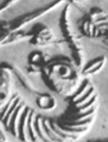




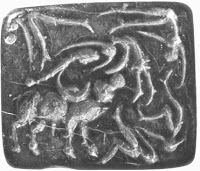













![In a Feb. 18, 2011 photo, the Beauty of Xiaohe, a mummy discovered in the Tarim Basin in far western... [+] China, is shown at the "Secrets of the Silk Road" exhibit at the University of Pennsylvania Museum of Archaeology and Anthropology in Philadelphia. The exhibit is scheduled to run through until March 15. Philadelphia is the final stop before the artifacts return to China. (AP Photo/Matt Rourke)](http://thumbor.forbes.com/thumbor/960x0/https%3A%2F%2Fspecials-images.forbesimg.com%2Fimageserve%2Fba215a390a4c43cc983d52b6999a4c79%2F640x0.jpg%3Ffit%3Dscale)

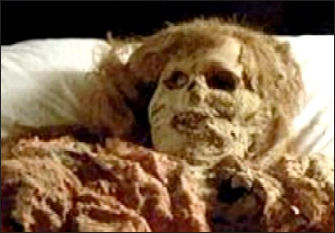

























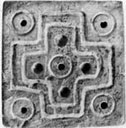











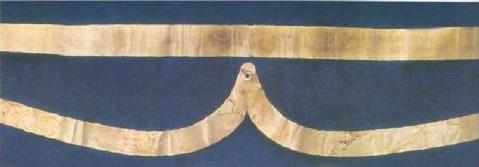


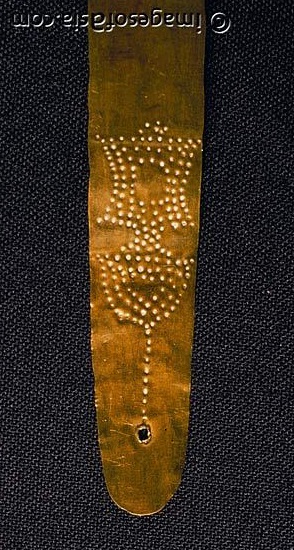 Gold f
Gold f


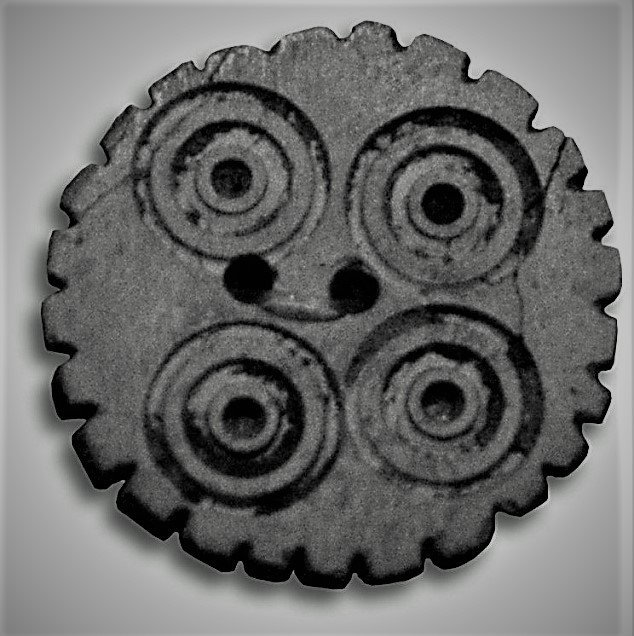
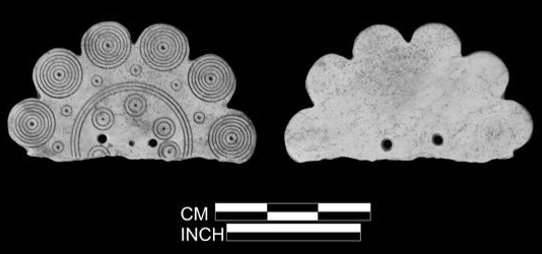

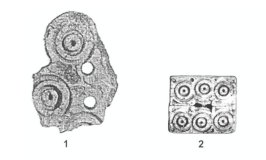 Artifacts from Jiroft.
Artifacts from Jiroft.
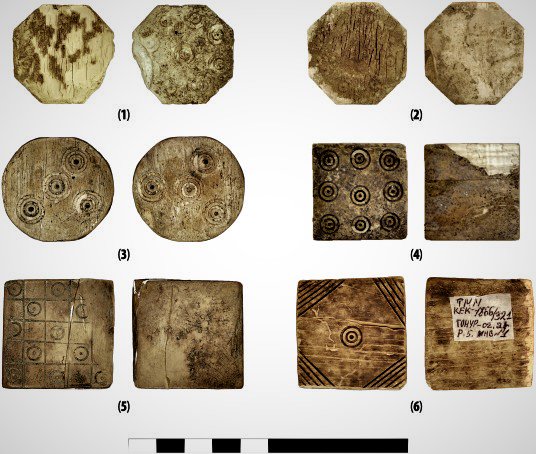
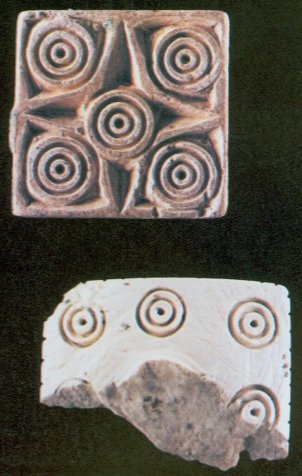
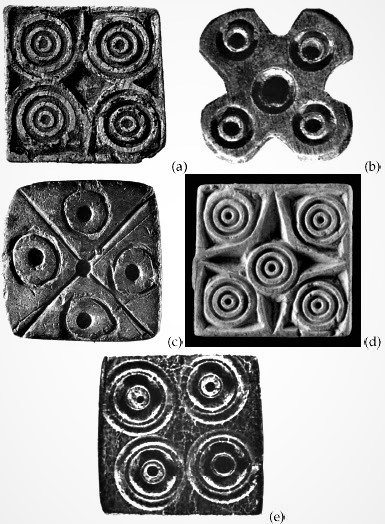
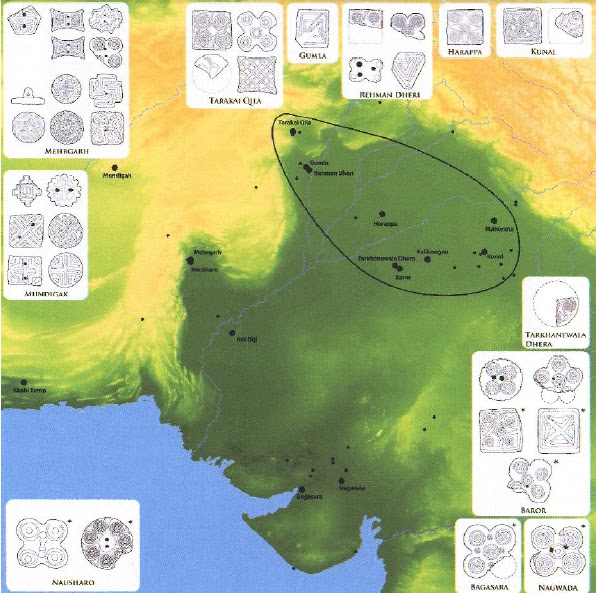

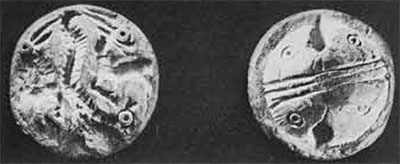

 Potr, 'purifier priest' (RV) Poddār,
Potr, 'purifier priest' (RV) Poddār, 



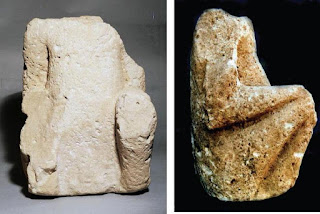 Dholavira. Stone statue.
Dholavira. Stone statue. 

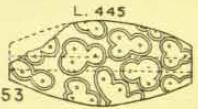
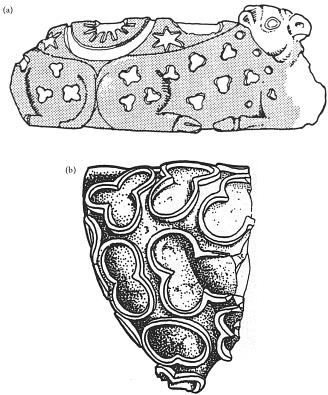
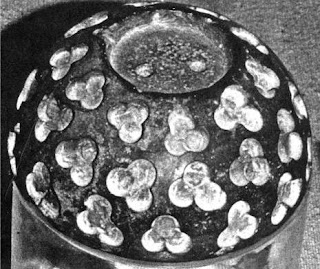
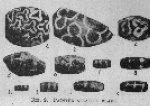








 Detail of terracotta bangle with red and white trefoil on a green background H98-3516/8667-01 from Trench 43).
Detail of terracotta bangle with red and white trefoil on a green background H98-3516/8667-01 from Trench 43). 
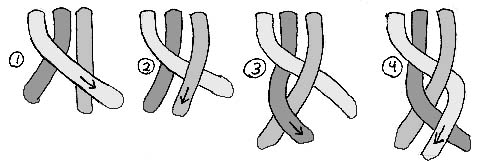


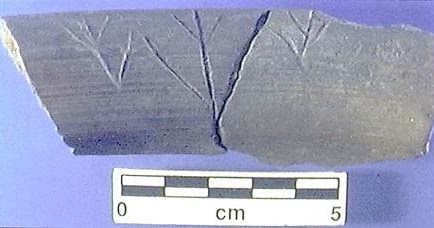
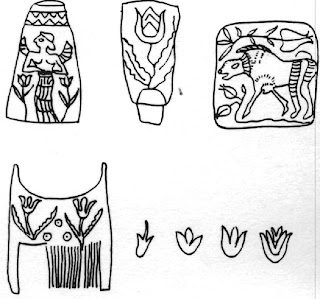
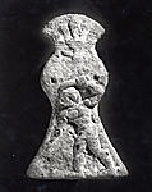
--510x286.jpg) Found in a tomb in Tell Abraq
Found in a tomb in Tell Abraq
































 Lal says he answered as an archaeologist would—that unless the actual area of concern was excavated, no such conclusion could be drawn, adding that the mosque’s floor was wide enough to conduct spot probes without damaging the structure. By then, the Ramjanmabhoomi issue had turned into a full-fledged political movement, and when the Masjid was pulled down on December 6th, 1992, he says, “Personally, speaking I was unhappy about it.” To him, it was incidental that he was involved with the 1977-86 excavations. Ayodhya was one of five sites taken up for the Ramayana Project of the Indian Institute of Advanced Studies, Shimla, of which Lal was appointed director after he quit as director general of the Archaeological Survey of India in 1972. As an academic, he says, he had three ‘curiosities’: uncovering archaeological remains of the Ramayana, Mahabharata and the Aryans. The findings of the Mahabharata Project, for which excavations were done in the early 1950s, had encouraged him to take up the historicity of the Ramayana. Lal had no political connections and was never in touch with any leader of the agitation for a temple in Ayodhya, though he always had his political views. “There is only one god in this country—the vote,” he says. His role in Rama’s ascent as a political icon may have been unwitting, but was significant all the same. “A story on Ayodhya would be incomplete without him,” says Ram Bahadur Rai, a former journalist who heads the board of the Indira Gandhi Centre for Arts, “His findings were cited as evidence in the agitation.”
Lal says he answered as an archaeologist would—that unless the actual area of concern was excavated, no such conclusion could be drawn, adding that the mosque’s floor was wide enough to conduct spot probes without damaging the structure. By then, the Ramjanmabhoomi issue had turned into a full-fledged political movement, and when the Masjid was pulled down on December 6th, 1992, he says, “Personally, speaking I was unhappy about it.” To him, it was incidental that he was involved with the 1977-86 excavations. Ayodhya was one of five sites taken up for the Ramayana Project of the Indian Institute of Advanced Studies, Shimla, of which Lal was appointed director after he quit as director general of the Archaeological Survey of India in 1972. As an academic, he says, he had three ‘curiosities’: uncovering archaeological remains of the Ramayana, Mahabharata and the Aryans. The findings of the Mahabharata Project, for which excavations were done in the early 1950s, had encouraged him to take up the historicity of the Ramayana. Lal had no political connections and was never in touch with any leader of the agitation for a temple in Ayodhya, though he always had his political views. “There is only one god in this country—the vote,” he says. His role in Rama’s ascent as a political icon may have been unwitting, but was significant all the same. “A story on Ayodhya would be incomplete without him,” says Ram Bahadur Rai, a former journalist who heads the board of the Indira Gandhi Centre for Arts, “His findings were cited as evidence in the agitation.” Two years before Lal first began excavation work in 1952 on the Mahabharata Project, Ramachandra Das Paramhans, born as Chandreswar Tiwari in Bihar in 1913, had filed a law suit for prayers to continue and idols to be retained under the central dome of the Ayodhya structure. An earlier suit for the right to perform puja at the site had been filed in Faizabad by one Gopal Simla Visharad soon after an idol of Ram Lalla was found placed there overnight in 1949, but as head of the Digambar Akhara, a congregation of Naga sadhus based in Ayodhya, Paramhans was among the first to mobilise an effort to claim the disputed site’s legal title. “He was convinced of the historicity of the place and was adamant that Ramjanmabhoomi should be liberated. Till his last breath, he said he will fight for it,” recounts BJP leader R Balashankar, a former journalist and former editor of the RSS publication Organiser. With his flowing grey beard and yellow dhoti, Paramhans shot to fame as president of the Ramjanmabhoomi Nyas, an entity dedicated to the cause. In 1985, he even threatened to immolate himself if the gates of the shrine were not opened by Ram Navami the following year (neither happened). According to Balashankar, Paramhans had lost faith in the judiciary and believed that only a mass movement would deliver Hindus justice. He died in 2003, aged 90.
Two years before Lal first began excavation work in 1952 on the Mahabharata Project, Ramachandra Das Paramhans, born as Chandreswar Tiwari in Bihar in 1913, had filed a law suit for prayers to continue and idols to be retained under the central dome of the Ayodhya structure. An earlier suit for the right to perform puja at the site had been filed in Faizabad by one Gopal Simla Visharad soon after an idol of Ram Lalla was found placed there overnight in 1949, but as head of the Digambar Akhara, a congregation of Naga sadhus based in Ayodhya, Paramhans was among the first to mobilise an effort to claim the disputed site’s legal title. “He was convinced of the historicity of the place and was adamant that Ramjanmabhoomi should be liberated. Till his last breath, he said he will fight for it,” recounts BJP leader R Balashankar, a former journalist and former editor of the RSS publication Organiser. With his flowing grey beard and yellow dhoti, Paramhans shot to fame as president of the Ramjanmabhoomi Nyas, an entity dedicated to the cause. In 1985, he even threatened to immolate himself if the gates of the shrine were not opened by Ram Navami the following year (neither happened). According to Balashankar, Paramhans had lost faith in the judiciary and believed that only a mass movement would deliver Hindus justice. He died in 2003, aged 90. Moropant Pingley, a senior RSS leader, worked for the cause behind the scenes. A full-time pracharak, he came up with several ideas to give the movement ballast. “I met Pingley several times. He joked a lot, but never divulged his plans,” says Ram Bahadur Rai, a former journalist. As a founding member of the Vishwa Hindu Parishad, the Sangh affiliate that spearheaded the temple agitation in the 1980s, Pingley was the man who drew out the road map. He died a couple of months after Paramhans.
Moropant Pingley, a senior RSS leader, worked for the cause behind the scenes. A full-time pracharak, he came up with several ideas to give the movement ballast. “I met Pingley several times. He joked a lot, but never divulged his plans,” says Ram Bahadur Rai, a former journalist. As a founding member of the Vishwa Hindu Parishad, the Sangh affiliate that spearheaded the temple agitation in the 1980s, Pingley was the man who drew out the road map. He died a couple of months after Paramhans. As the man deputed in 1981 by the RSS to lead the VHP, Ashok Singhal was at the forefront the movement. He had caught the Sangh leadership’s attention that year with a speech at an RSS conclave in Bangalore asking for a Hindu awakening in the aftermath of the mass conversion of Dalits to Islam in Meenakshipuram, Tamil Nadu. Singhal was among the organisers of the first VHP ‘dharma sansad’ in 1984, attended by hundreds of sadhus and others, at Vigyan Bhavan in Delhi. He was among those present at the site during the demolition of the Babri Masjid. Balashankar recalls that when he met the VHP chief at an Agra guest house where he was under arrest after the event—along with such BJP leaders as Advani, Murli Manohar Joshi and Uma Bharti—Singhal had said the demolition had happened in the heat of the moment. “He told me it was not in the scheme of things to bring down the structure. At the same time, he said he was not unhappy about it,” recalls Balashankar. Singhal died in 2015.
As the man deputed in 1981 by the RSS to lead the VHP, Ashok Singhal was at the forefront the movement. He had caught the Sangh leadership’s attention that year with a speech at an RSS conclave in Bangalore asking for a Hindu awakening in the aftermath of the mass conversion of Dalits to Islam in Meenakshipuram, Tamil Nadu. Singhal was among the organisers of the first VHP ‘dharma sansad’ in 1984, attended by hundreds of sadhus and others, at Vigyan Bhavan in Delhi. He was among those present at the site during the demolition of the Babri Masjid. Balashankar recalls that when he met the VHP chief at an Agra guest house where he was under arrest after the event—along with such BJP leaders as Advani, Murli Manohar Joshi and Uma Bharti—Singhal had said the demolition had happened in the heat of the moment. “He told me it was not in the scheme of things to bring down the structure. At the same time, he said he was not unhappy about it,” recalls Balashankar. Singhal died in 2015. In 1984, Mahant Avaidyanath, the saffron-clad chief priest of the Gorakhnath temple and a Hindu Mahasabha leader, founded the Ramjanmabhoomi Mukti Yajna Samiti to ‘liberate’ the disputed site. This body planned processions with Hindu nationalist slogans to be chanted. “He was a strong orator with a powerful personality,” says Balashankar. Like Paramhans, Avaidyanath is among those listed by the Liberhan Commission report on the Babri Masjid demolition for having made ‘provocative speeches’. He joined electoral politics in 1962, winning UP’s Maniram Assembly seat, which he won four more times after that. Avaidyanath also won the Gorakhpur Lok Sabha seat four times—as a Hindu Mahasabha candidate in 1970 and 1989 and as a BJP leader in 1991 and 1996. Ten years before his death in 2014, he passed the mantle of the Gorakhnath temple on to his protégé Yogi Adityanath, who also represented Gorakhpur in Parliament several times and is now Chief Minister of UP.
In 1984, Mahant Avaidyanath, the saffron-clad chief priest of the Gorakhnath temple and a Hindu Mahasabha leader, founded the Ramjanmabhoomi Mukti Yajna Samiti to ‘liberate’ the disputed site. This body planned processions with Hindu nationalist slogans to be chanted. “He was a strong orator with a powerful personality,” says Balashankar. Like Paramhans, Avaidyanath is among those listed by the Liberhan Commission report on the Babri Masjid demolition for having made ‘provocative speeches’. He joined electoral politics in 1962, winning UP’s Maniram Assembly seat, which he won four more times after that. Avaidyanath also won the Gorakhpur Lok Sabha seat four times—as a Hindu Mahasabha candidate in 1970 and 1989 and as a BJP leader in 1991 and 1996. Ten years before his death in 2014, he passed the mantle of the Gorakhnath temple on to his protégé Yogi Adityanath, who also represented Gorakhpur in Parliament several times and is now Chief Minister of UP.






